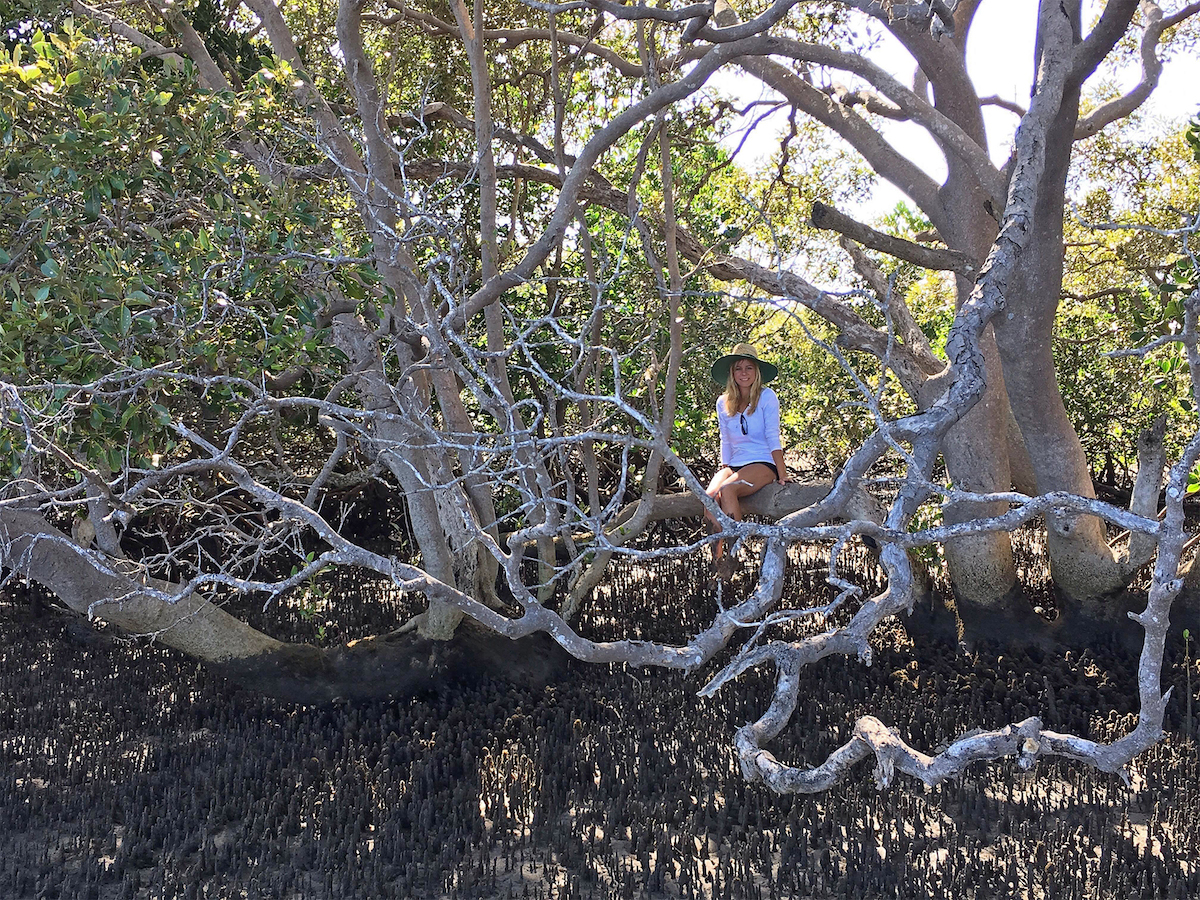- A recently published study finds mangroves release more methane than previously estimated.
- Methane packs much more of a global warming punch than carbon dioxide, and the study indicates this methane could be offsetting around 20 percent of a mangrove’s soil carbon storage rate.
- Deforestation of mangroves releases much of the carbon stored by mangroves, including methane.
Mangroves, the dense tangled forests that buffer land from sea in many coastal areas of the tropics, are renowned for their ability to store carbon and help fight climate change. But new research finds mangroves may emit more carbon as methane than previously estimated – emissions made even worse by deforestation.
The ability of mangroves to sequester carbon in the ground – termed “blue carbon” – is unparalleled, with previous research finding a tract of mangrove can bury 40 times more carbon than a similarly sized area of rainforest.
But what exactly happens to this carbon once it’s in the ground has been something of a mystery. So scientists at universities in Australia decided to find out by examining the soil carbon stored beneath mangroves in Queensland.

Their results, published in Science Advances, reveal that mangrove soil carbon doesn’t remain stored in perpetuity. Some of it is transformed from carbon dioxide (CO2) to methane (CH4) by tiny microorganisims called archea, and is then released back into the atmosphere. Methane has a much bigger warming impact than carbon dioxide – 34 to 86 times more powerful – so even a bit of methane has the potential to offset mangrove CO2 storage.
Ultimately, the team found that the methane released from mangrove soil carbon offsets blue carbon burial rates by an average of 20 percent. They say their results show that methane emissions should be factored into carbon accounting when evaluating the carbon storage potential of mangrove forests.
The researchers say that deforestation has the potential to increase these emissions. Zooming in, their study reveals that more methane was lost when mangrove soil was above-water than below. Clearing mangroves generally involves first draining them, which exposes their sediment to the air. This is exacerbated further when the trees themselves are uprooted, effectively releasing their carbon stores into the atmosphere.
“Mangrove loss/deforestation would result in decreased carbon sequestration rates and decreased burial efficiency combined with increased decomposition of organic carbon in disturbed sediments, which would enhance methane (and carbon dioxide) emissions and thus carbon burial offsets,” said Judith Rosentreter, a researcher at Southern Cross University and co-author of the study.

Mangroves around the world are being deforested at a fast clip, with between 30 and 50 percent lost over the past half-century to agriculture, aquaculture and infrastructure development. A study published earlier this year in Nature Climate Change found mangrove deforestation that happened between 2000 and 2012 released an amount of carbon equivalent to the annual CO2 emissions of Poland.
Overall, researchers estimate the loss of soil carbon from the destruction of mangroves and other coastal ecosystems contributes at least 3 to 19 percent of global deforestation-caused CO2 emissions (one study pegged it even higher). Economically, this costs the world somewhere between $6 billion and $42 billion every year, and does not include the loss of the other important ecosystem services that mangroves provide, such as flood mitigation and nurseries for fish stocks.
In now, in addition to deforestation releasing more CO2 from mangroves, it also seems likely that it releases more climate-punching methane. According to Rosentreter, “based on the CO2 emission[s] from disturbed blue carbon systems, a 10-30% estimate sounds reasonable.”
Banner image: The Fitzroy mangrove creek field site at dusk and during low tide. This is one of the three mangrove creeks where methane emissions were determined in 24-hour time series in the wet and in the dry season. The Fitzroy mangrove creek is located in tropical North Queensland, Australia. Photo by Ashly McMahon
Citation: Rosentreter, J. A., Maher, D. T., Erler, D. V., Murray, R. H., & Eyre, B. D. (2018). Methane emissions partially offset “blue carbon” burial in mangroves. Science advances, 4(6), eaao4985.

